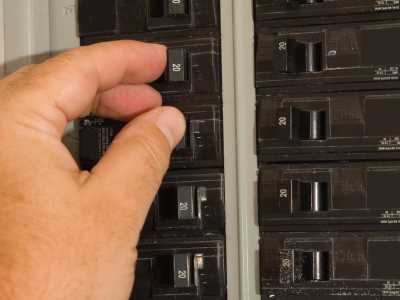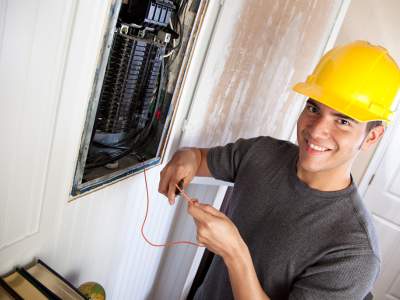A circuit breaker is an essential safety feature in any residential electrical panel. It is designed to protect your home from electrical overloads and short circuits by automatically shutting off the power when necessary. However, there may be times when a circuit breaker trips and needs to be reset.
In this blog post, we will discuss how to reset a circuit breaker in a residential electrical panel.

Understanding Circuit Breakers
Before we dive into the steps of resetting a circuit breaker, it is important to understand how they work. A circuit breaker is essentially a switch that is designed to trip and shut off the power when it detects an overload or short circuit. This prevents the wires from overheating and potentially causing a fire.
Circuit breakers are typically labeled with the amperage they can handle, such as 15, 20, or 30 amps. This indicates the maximum amount of electrical current that can safely flow through the circuit before the breaker trips. It is important to note that circuit breakers should never be replaced with a higher amperage rating as this can be a safety hazard.
Reasons for a Tripped Circuit Breaker
There are a few common reasons why a circuit breaker may trip:
- Overloaded circuit: This occurs when too many electrical devices are connected to a single circuit, causing it to draw more current than the circuit can handle.
- Short circuit: This happens when a hot wire comes into contact with a neutral wire, causing a surge of electricity.
- Ground fault: Similar to a short circuit, this occurs when a hot wire comes into contact with a ground wire.
Steps to Reset a Circuit Breaker
Now that you have a basic understanding of circuit breakers, let’s go through the steps to reset one in a residential electrical panel.
Step 1: Identify the Tripped Circuit Breaker
The first step is to identify which circuit breaker has tripped. In most residential electrical panels, the tripped breaker will be in the “off” position, with the switch in the middle or slightly to one side. Other times the breaker may be an auto reset circuit breaker. You may also notice a red or orange indicator on the switch. Sometimes the breaker won't reset and a call to a licensed electrical contractor may be needed. Engle Services can handle any electrical need you may have.
Step 2: Turn Off All Electrical Devices on the Tripped Circuit
Before attempting to reset the circuit breaker, it is important to turn off all electrical devices that are connected to the tripped circuit. This will prevent the circuit from becoming overloaded again when the power is restored.
Step 3: Reset the Circuit Breaker
To reset the circuit breaker, firmly push the switch to the “off” position and then back to the “on” position. Sometimes after a power surge a circuit breaker reset is all you may need. You should hear a click when the switch is reset. If the switch does not stay in the “on” position, it may indicate a larger issue and you should consult a professional electrician. You can search local electricians to find a residential electrician near you.
Step 4: Turn On Electrical Devices
Once the circuit breaker has been reset, you can turn on the electrical devices that were turned off in step 2. If the circuit breaker trips again immediately, it may indicate a larger issue and you should consult a professional electrician.
Tips for Preventing Tripped Circuit Breakers
While tripped circuit breakers are a common occurrence, there are some steps you can take to prevent them from happening:- Spread out electrical devices: Avoid plugging too many devices into a single circuit. Spread them out among different circuits to prevent overloading.
- Upgrade your electrical panel: If you find that your circuit breakers are tripping frequently, it may be time to upgrade your electrical panel to handle more electrical load.
- Use surge protectors: Surge protectors can help prevent short circuits and ground faults by regulating the flow of electricity to your devices.

When to Call a Professional
While resetting a circuit breaker is a simple task, there are some situations where it is best to call a professional electrician:- If the circuit breaker continues to trip after being reset, it may indicate a larger issue with the electrical wiring in your home.
- If you are unsure which circuit breaker has tripped, it is best to call a professional to avoid any potential safety hazards.
- If you notice any signs of damage or wear on the circuit breaker, such as melting or burning, it is important to have it inspected by a licensed professional.
Conclusion
Resetting a circuit breaker is a simple task that can be done by any homeowner. By understanding how circuit breakers work and following the steps outlined in this article, you can safely reset a tripped circuit breaker in your residential electrical panel. Remember to always prioritize safety and consult a professional if you have any concerns or are unsure about the process.
If you're in need of an electrical panel repair or electrical panel replacment, we're here to help. Schedule an appointment online or give us a call at (855) GET-ENGLE
